Your home should feel like more than just a place to crash—it ought to tell your story. When friends walk in, they should instantly get a sense of what makes you tick and what you care about.
Remember to repin your favorite images!
Start with a neutral base so your favorite items pop, and you can easily swap things out as your style changes.
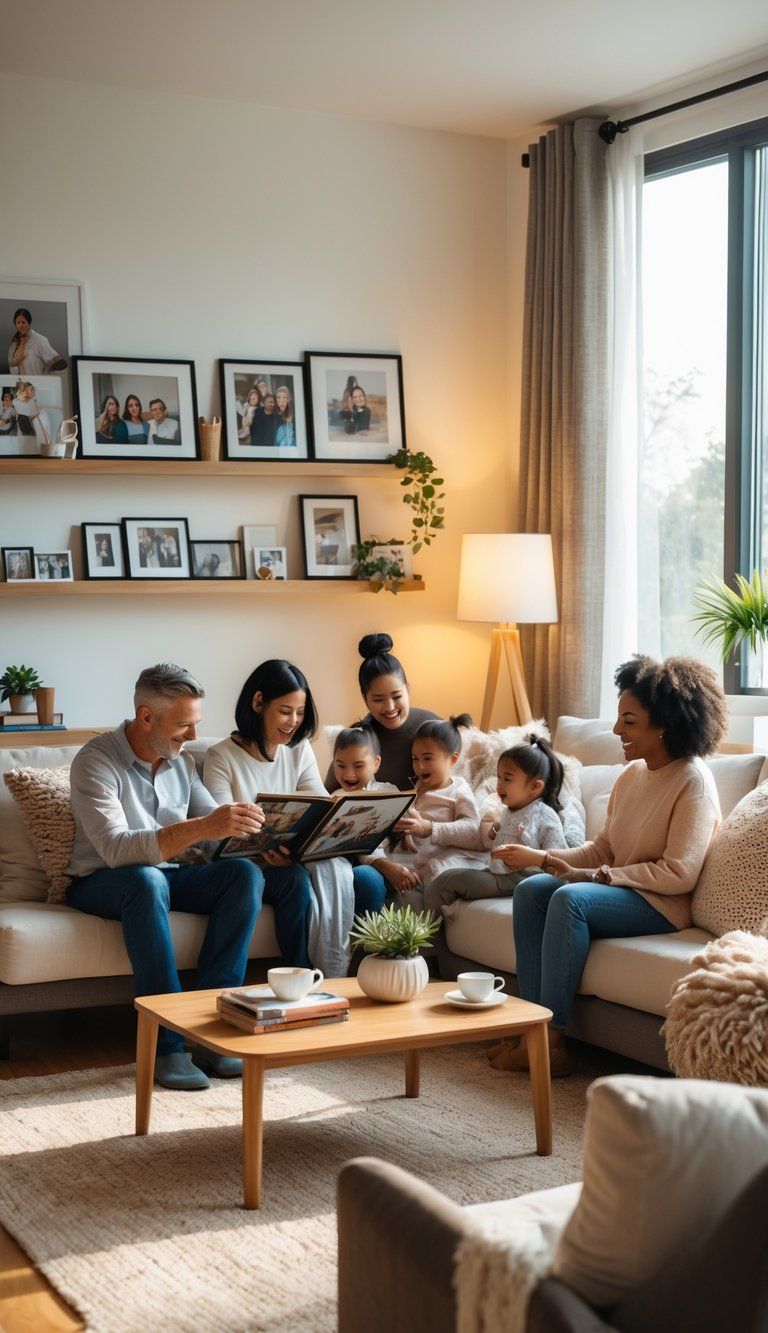
Think about what makes you smile when you see it. Maybe it’s travel souvenirs, family photos, or art that just speaks to you.
Add these special touches and you’ll instantly give your space more personality. Even tiny details—like an engraved mantel or a recipe framed on the wall—can turn a house into your home.
The most memorable homes have a natural flow from one space to the next. You want your style to connect each room, and even the outdoors, without forcing everything to match.
Let a common thread tie things together, but don’t stress about perfection. You want your home to show off the different chapters of your life, not just a single look.
The Philosophy of Creating a Home That Tells Your Personal Story
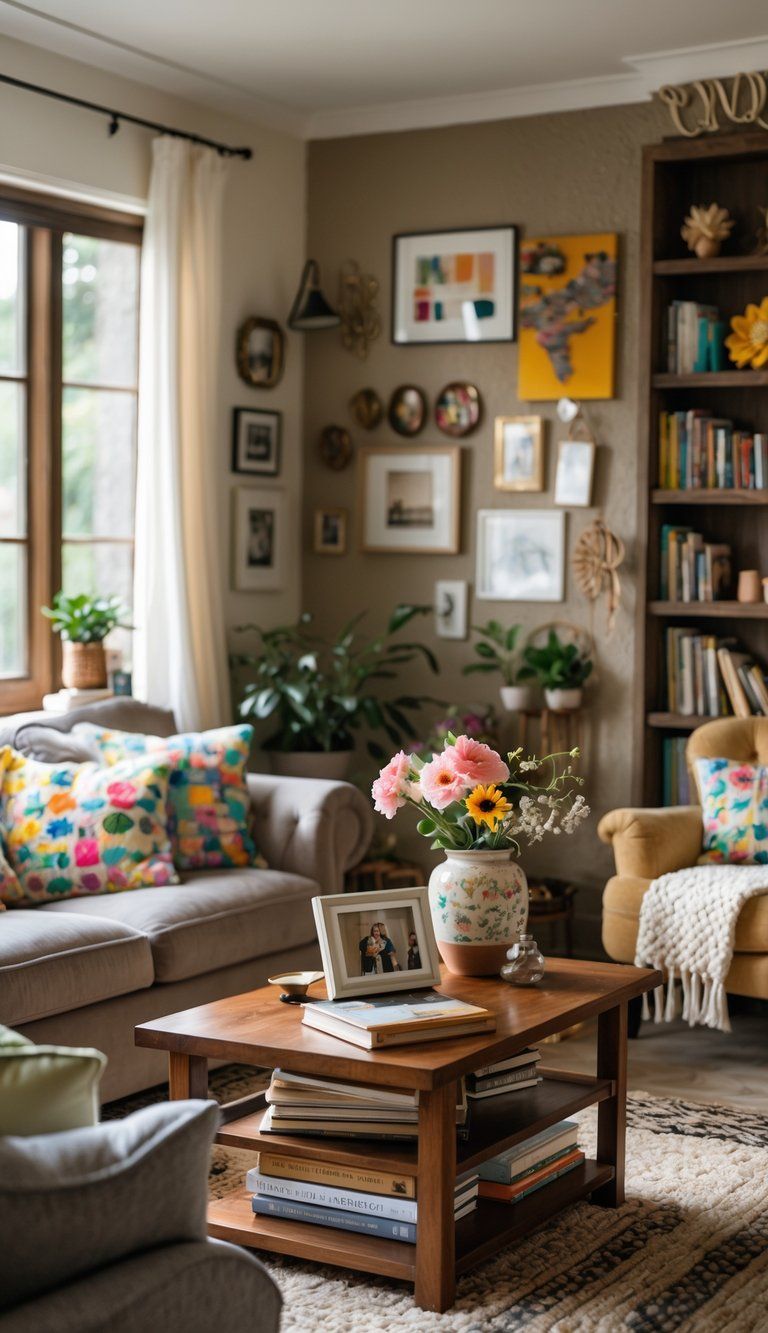
Your home reflects who you are. The spaces around us say a lot about our dreams, values, and experiences—no words needed.
Understanding the Value of Personal Storytelling in Your Living Space
Personal storytelling brings a deeper connection to your home. When your space shows your journey, it becomes more than shelter—it turns into a sanctuary.
Studies say 67% of people feel more connected to home when surrounded by personal items. These objects anchor you to memories and moments that matter.
You don’t need fancy renovations to tell your story. Simple displays—like photos, travel keepsakes, or family heirlooms—can weave your narrative throughout your space.
Authenticity is the key. When you fill your home with things that truly matter, it just feels right, both for you and your guests.
Defining What Makes a Home Unique
A unique home comes from your mix of preferences, values, and experiences. Forget trends for a minute—personalized spaces start with thinking about what really matters to you.
Your culture, family traditions, and life experiences all shape your taste. These things lay the groundwork for your home’s vibe.
Let your hobbies and passions shine. If you love music, show off your instruments; if reading is your thing, carve out cozy reading nooks with meaningful books.
Things that make homes unique:
- Personal artifacts with stories
- Custom furniture that fits your life
- Colors that spark emotion for you
- Layouts that work for your routines
The Impact of Emotional Connection in Home Design
Emotional connection is what makes a house feel like home. When your space shows your story, it creates a psychological comfort and eases stress.
The way you feel in your home touches everything—from your sleep to your creativity. Spaces filled with personal meaning just feel better than ones focused only on looks.
You build this connection over time by choosing things that matter to you. Each meaningful choice strengthens your bond with your space.
Pay attention to how colors and textures make you feel. Soft fabrics might comfort you, while certain hues can energize. Let those feelings guide your decisions.
When you design with emotion in mind, your home becomes a living scrapbook of your journey.
Exploring and Expressing Your Personal Style
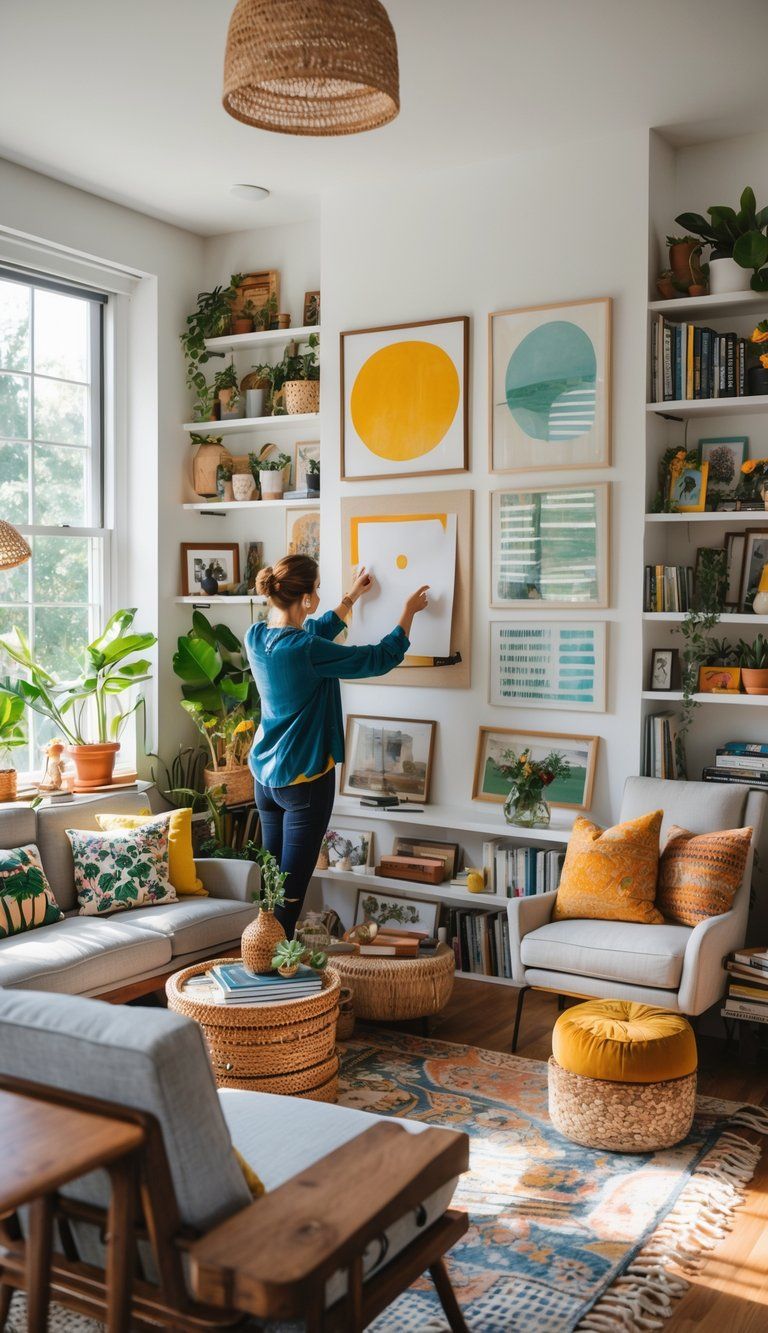
Your home is more than just four walls—it’s your canvas. The way you decorate shows the world who you are and what you care about.
Identifying the Elements of Your Personal Style
Start by noticing what catches your eye. Look at your clothes, your favorite restaurants, or the places you love to visit.
Do you like clean lines or a bit of detail? Are you into bold colors or do you lean neutral? These patterns reveal your design taste.
Try gathering images that speak to you—magazines, Pinterest, Instagram, whatever works. Collect 20-30 images, then look for repeats:
- Colors you keep picking
- Textures you like to touch
- Shapes and lines you see again and again
Look at what you’ve already bought for your home. Which pieces have stuck around the longest? Chances are, they fit your real style.
Drawing Inspiration From Memories and Passions
Your memories are a goldmine for design ideas. Think about places you’ve been, childhood homes, or moments that shaped you.
Put family heirlooms and keepsakes front and center. Maybe your grandparents’ record player becomes the star of your living room. Travel souvenirs can make cool little displays.
Let your hobbies show. If you love music, set up a spot for listening to records. If you live for books, create a reading nook with good lighting and a comfy chair.
Quick inspiration tip: List three favorite memories. What colors, textures, or feelings come to mind? Use those in your home.
Balancing Trends With Timelessness
Trendy looks can be fun, but if you want a home that feels like you, start with timeless pieces. Invest in classic furniture and details that won’t go out of style.
Use trends for smaller things you can easily swap out:
- Pillows and throws
- Art and little décor
- Small accent furniture
Try the 80/20 rule: 80% classic, 20% trendy. That way, your home stays current but doesn’t need a full makeover every year.
Before you buy into a trend, ask yourself, “Will I still love this in five years?” If not, maybe use it for accessories or paint—stuff that’s easy to change.
Incorporating Meaningful Pieces Into Your Home
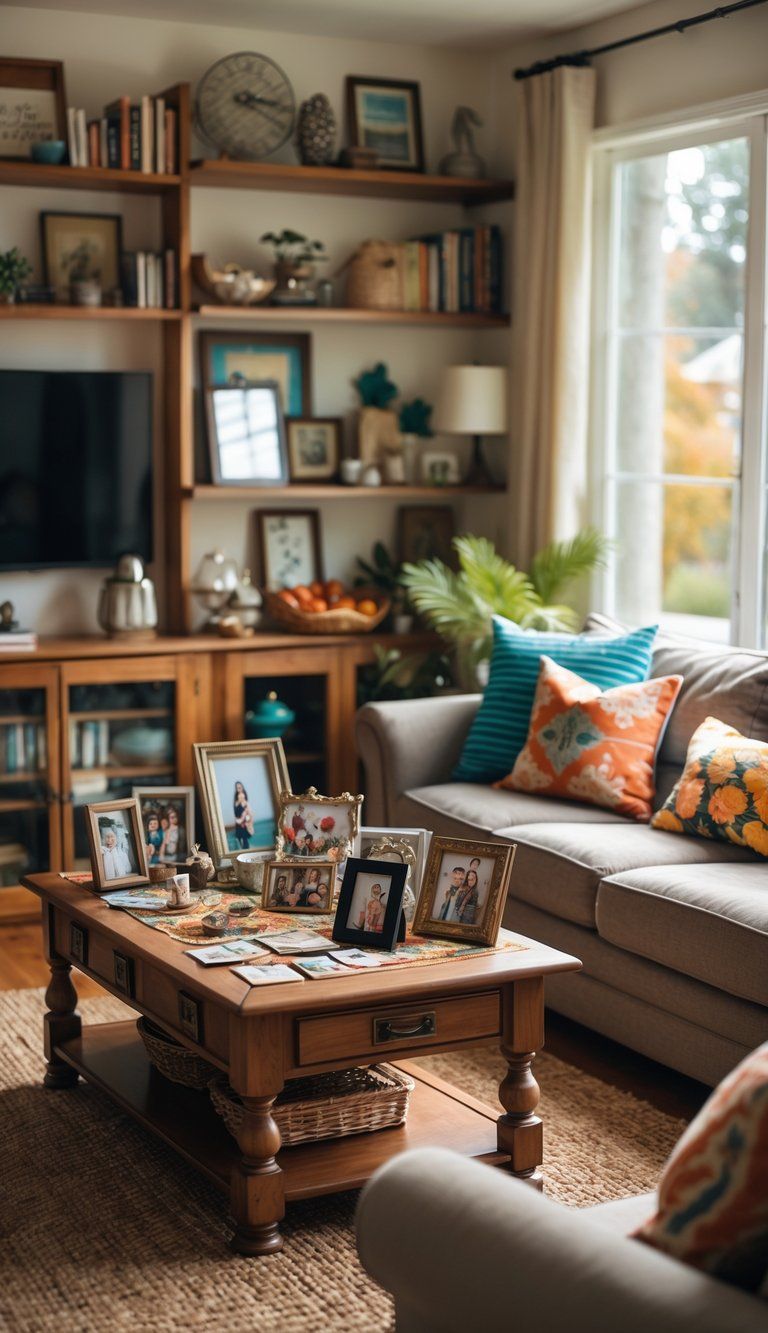
Adding meaningful things turns your house into a real home. These objects bring warmth and show your story to anyone who visits.
Selecting Family Heirlooms and Personal Touches
Family heirlooms connect you to your roots. Look for pieces with a story—maybe grandma’s old chair or your dad’s bookshelf. These items bring history and a sense of belonging.
Show off family photos in creative ways. Try a gallery wall with different frame sizes, or a photo ledge so you can swap pictures easily.
Small touches matter too. Frame your kids’ art or display collections tied to your hobbies. A handmade quilt over the couch adds both comfort and meaning.
Quick Tip: Switch out seasonal items now and then. It keeps things interesting and lets you honor different memories throughout the year.
Showcasing Travel Mementos and Souvenirs
Travel mementos add a global touch and remind you of adventures. Don’t stash souvenirs away—find creative ways to display them.
Group items by trip or theme. A shelf filled with things from Japan, for example, makes a bigger impact than scattering them everywhere.
Turn souvenirs into things you actually use. Beach stones can be paperweights, and foreign coins look cool framed as art.
Try making a travel wall with maps, tickets, and photos. Shadow boxes keep delicate stuff safe but visible.
Good spots for travel displays:
- Entryway tables
- Office bookshelves
- Guest room nightstands
Curating Wall Art to Reflect Your Journey
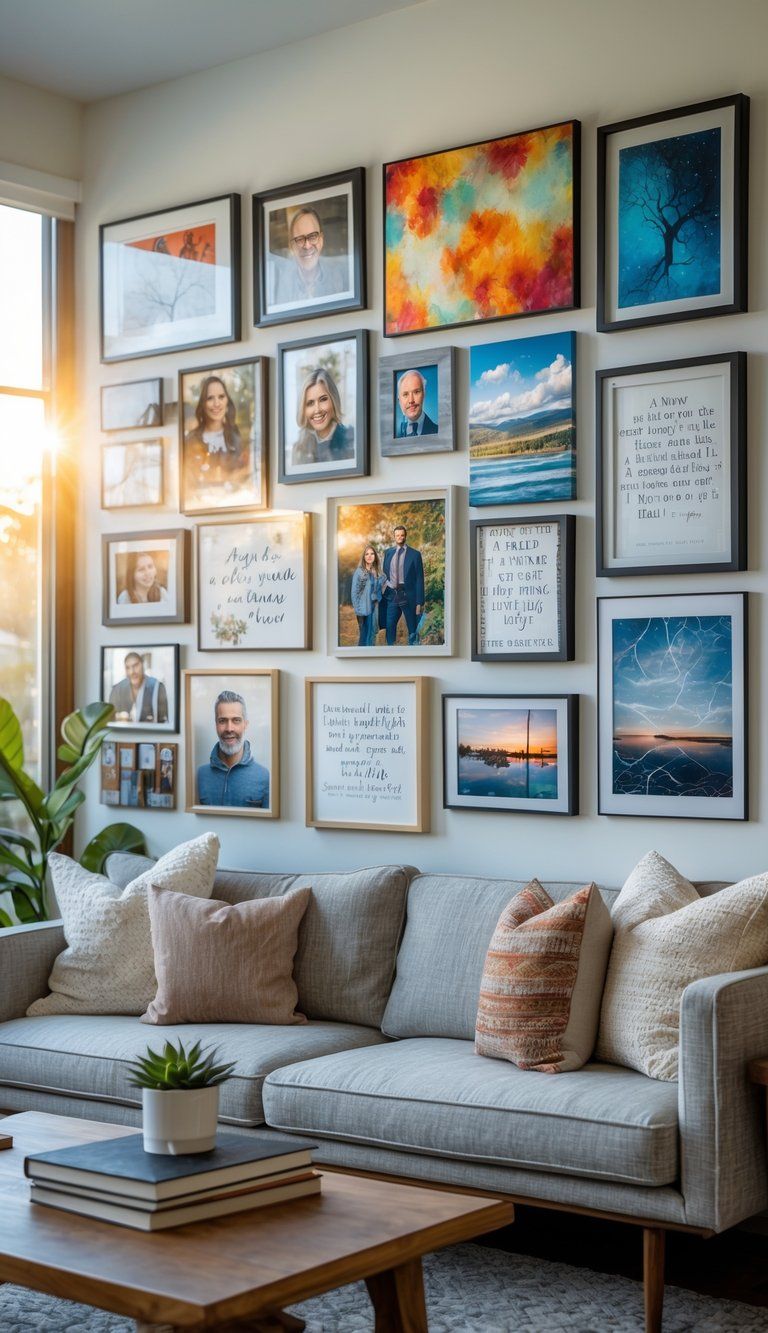
Your walls are the perfect spot to show off what matters most. The art you pick tells a visual story about your life, values, and dreams.
Creating an Impactful Gallery Wall
Gallery walls turn plain spaces into personal museums. Pick pieces that share a theme—maybe a color, a subject, or a frame style—to keep things cohesive.
Mix up sizes and shapes for more interest. Usually, bigger pieces look best in the center, with smaller ones around the edges.
Lay out your arrangement on the floor before you start hammering nails. It’s less risky and lets you play around with the look.
Keep the spacing between frames even—about 2-3 inches works well for a tidy feel.
Don’t be afraid to mix in unexpected things like concert tickets, maps, or even fabric swatches. These bits add personality and keep things from looking too staged.
Displaying Family Photos With Intention
Family photos deserve more than random spots on a shelf. Group related images—like vacations or birthdays—for a bigger impact.
Black and white photos can tie everything together, even if the originals are all over the place color-wise.
For a modern touch, try:
- Matching frames in different sizes
- A neat grid with even spacing
- Photo ledges so you can change things up easily
Switch out photos with the seasons to keep your display fresh. It’s a simple way to update your space without much effort.
Think about scale. In bigger rooms, go for larger prints or clusters. Tiny frames scattered everywhere can get lost and look messy.
Highlighting Hobbies and Passions Through Home Décor
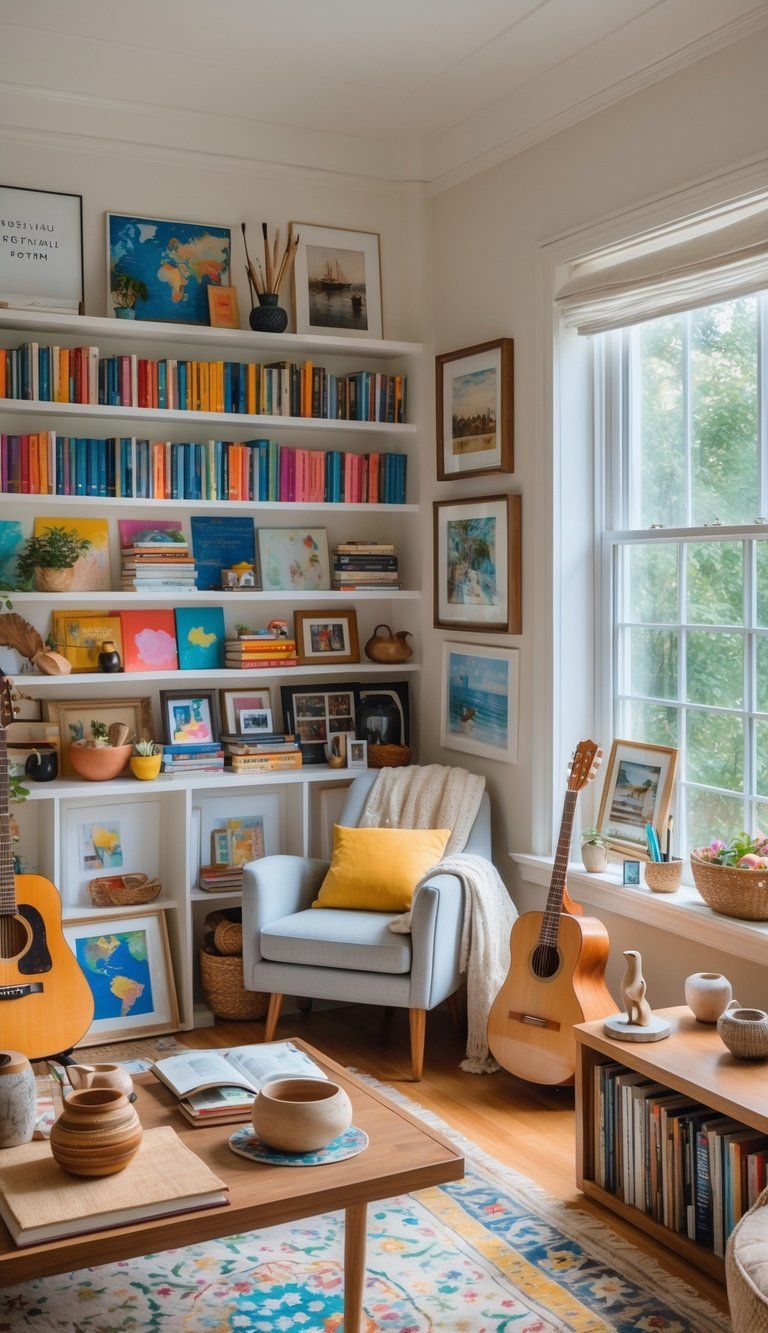
Your home feels most like yours when it shows off what you love. Adding hobbies and passions into your decor makes everything more personal and less like a catalog.
Integrating Collections That Showcase Your Interests
Collections say a lot about who you are. Stack your books on open shelves so people can see what you like to read. If music is your thing, display vinyl records or set up a spot for your favorite albums.
Travelers can create a gallery wall with maps and trip photos. Shadow boxes work great for smaller treasures.
Sports fans might frame old jerseys or equipment. The trick is to group similar items together for a bigger statement, rather than scattering them everywhere.
Pro tip: Rotate your collections every few months. It keeps your space from feeling cluttered and gives you a reason to show off different things.
Celebrating Imperfections and Handmade Items
Handmade items add character you just can’t get from store-bought stuff. If you make pottery, put your pieces on display—even the ones with wobbly edges. They show your creative journey.
For textile lovers, try:
- Tossing handmade throws over the couch
- Framing fabric swatches in shadow boxes
- Making custom pillows for extra color and texture
Those little imperfections—like uneven stitches or quirky shapes—tell your story and make your space feel real.
Don’t hide your projects. Set up a craft corner where work-in-progress is visible. It sparks conversation and shows your home is lived in, not just staged.
Design Strategies for Functional and Personalized Spaces
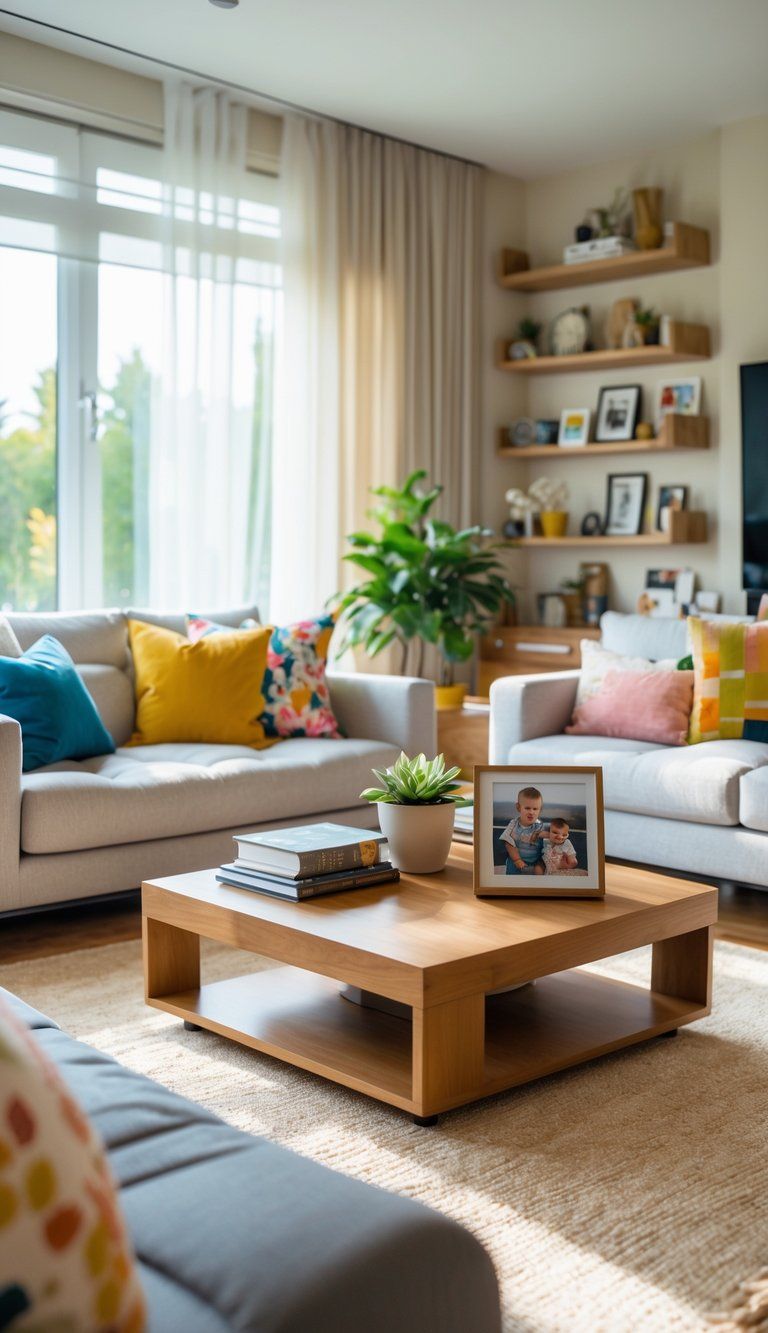
A home that works for you blends function with style. Smart choices can turn your space into a place that looks great and fits your everyday life.
Creating Focal Points That Tell a Story
Focal points anchor a room and pull your attention to what matters most. Start with one standout element in each room that feels like you.
Family photos on a gallery wall can tell your story. Hang them at eye level—you’ll notice the difference.
Heirloom furniture often makes great focal points. Maybe you’ve got your grandmother’s antique desk or a coffee table picked up on your travels. These pieces mean more than just decoration.
Try these ideas for meaningful focal points:
- Artwork that reminds you of a special moment
- Collections displayed together, not scattered all over
- Statement furniture that feels personal and useful
The best focal points do two jobs—they spark conversation and help you use the space.
Choosing Color Palettes With Color Psychology in Mind
Colors really shape how you feel at home. The right palette can lift your mood or help you relax.
Blues and greens help you unwind, so they work well for bedrooms or reading corners. They even lower blood pressure and ease tension—who knew?
Warm tones like red, orange, and yellow bring energy. Try them in kitchens or workspaces where you want a creative boost.
Think about what colors you love, but also consider what each room needs. Maybe your home office could use productive yellows. A bedroom probably calls for restful blues.
Test sample patches on the wall before you commit. Light changes everything—sometimes a color looks totally different at night.
Pick colors that match your style and help each room do its job.
Maximizing Storage and Organization for Meaningful Displays
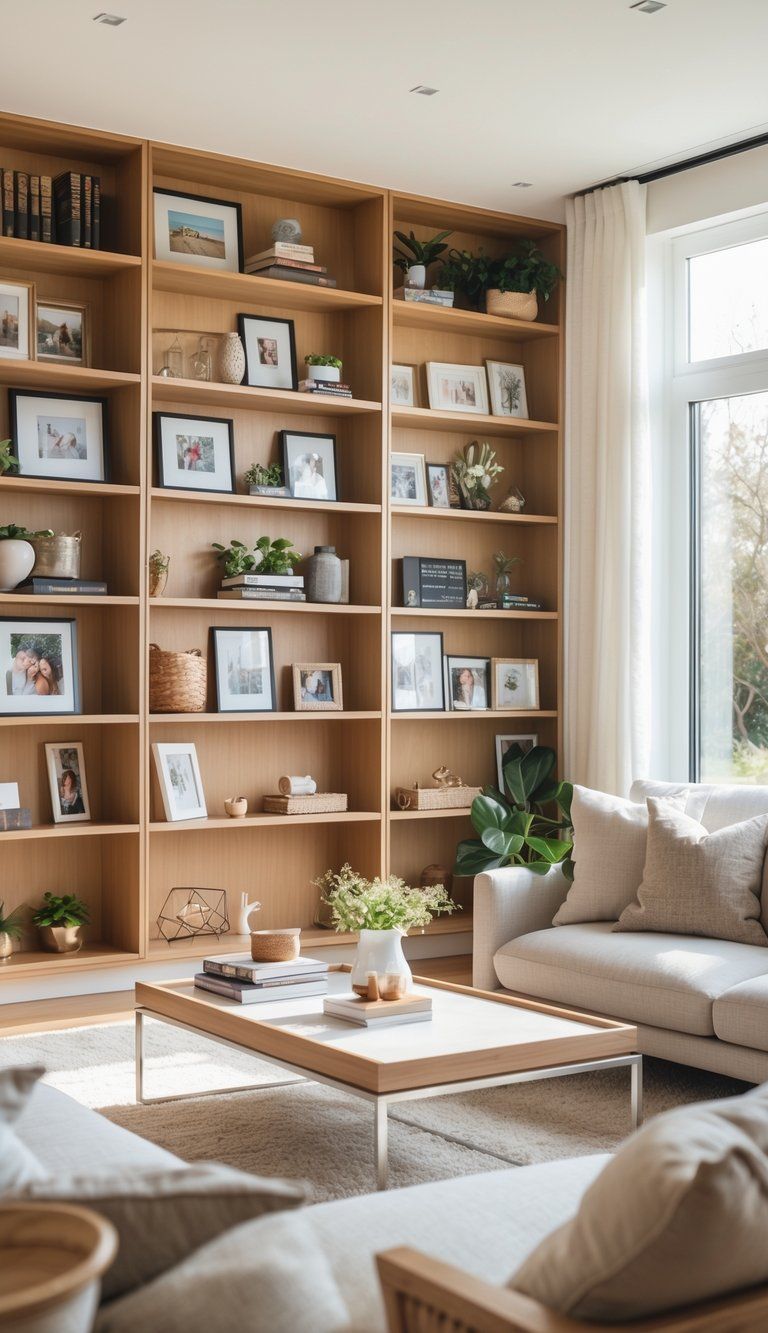
Smart storage doesn’t just hide mess—it gives your favorite things a place to shine. Good storage blends function with meaning, letting everyday stuff help tell your story.
Finding Storage Solutions That Complement Your Story
Custom storage should show off who you are. Love golf? Show your clubs on a special rack. If wine’s your thing, install a glass-front cabinet to display your bottles.
Built-in bookshelves are a reader’s dream. Organize books by color for a bold look, or by topic to share your interests. Leave gaps for personal treasures that say something about you.
Hidden storage matters too. Ottoman benches stash blankets and double as seats. Coffee tables with drawers keep remotes handy but out of sight.
Look for storage that:
- Fits your home’s vibe
- Highlights what’s meaningful
- Hides the daily clutter
- Makes life a little easier
Balancing Display and Clutter
Too much stuff on display just creates chaos. Pick objects that mean something—souvenirs, heirlooms, or art you actually love.
Rotate your displays. Tuck some things away and swap them out every season or so. It keeps your space interesting and personal.
Try these tips:
- Group similar pieces together
- Mix up heights and sizes
- Leave some empty space—don’t crowd the shelves
- Use lighting to spotlight special items
Negative space matters. Your eyes need a break between focal points. A cluttered shelf loses its magic, but a well-arranged one tells a story.
Maintaining and Evolving Your Home’s Story Over Time
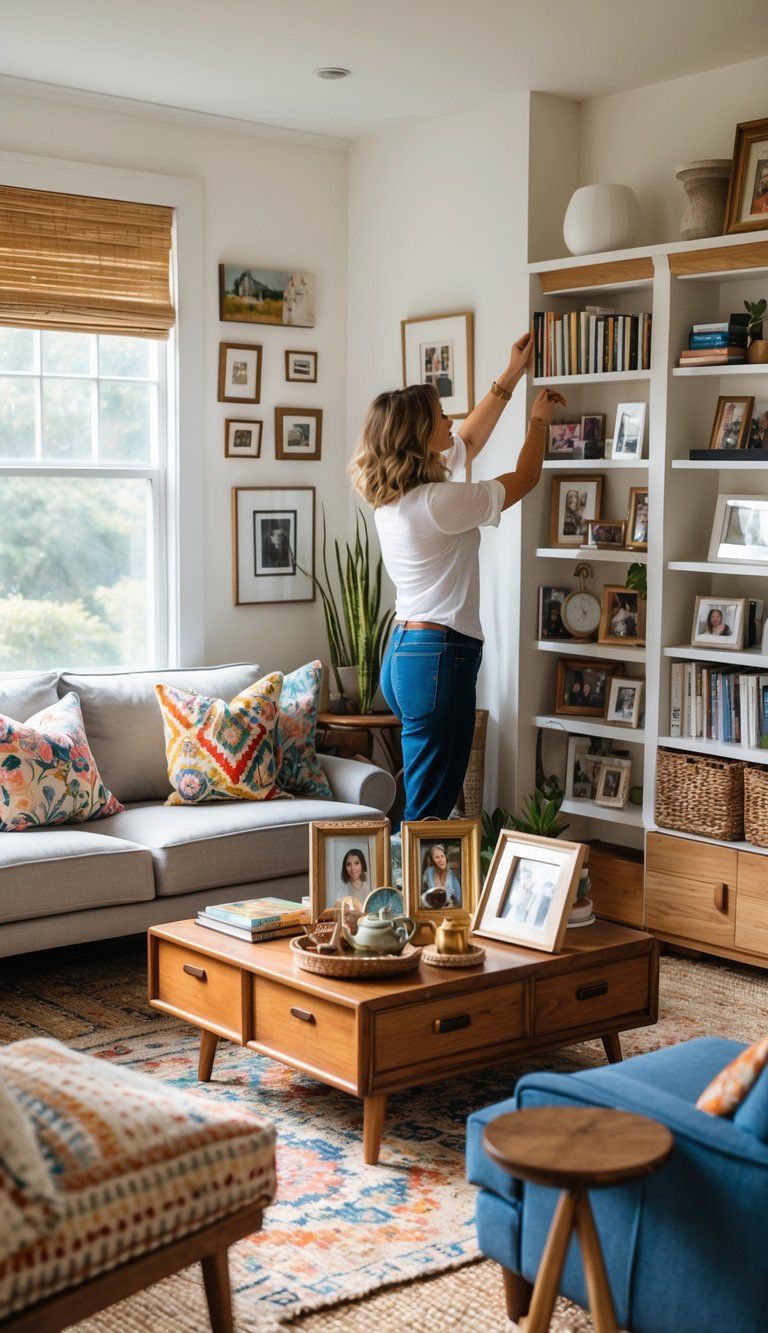
As you change, your home should change with you. Keep updating your space so it reflects who you are now—not just the person you were when you first decorated.
Refreshing Your Space As Your Story Grows
Your home’s story isn’t fixed. It should shift and grow with you as your life changes.
Twice a year, try to step back and really look at your space. Ask yourself what still feels right—and if anything needs a little update.
Small changes can honestly make a big difference. Maybe move your furniture around, or swap out accent pieces with the seasons. You get a fresh vibe without tackling a major renovation.
You might want to set up a “rotation system” for meaningful stuff. No need to display everything at once. Tuck some treasures away and bring them out now and then to rediscover their charm.
When you travel or hit a new milestone, pick out one special item to represent that memory. Adding these little by little keeps your story up to date, but your home won’t get overwhelmed with stuff.
If some decor stops speaking to you, let it go. Snap a photo for the memory, then pass the item along to someone who’ll actually love it.

